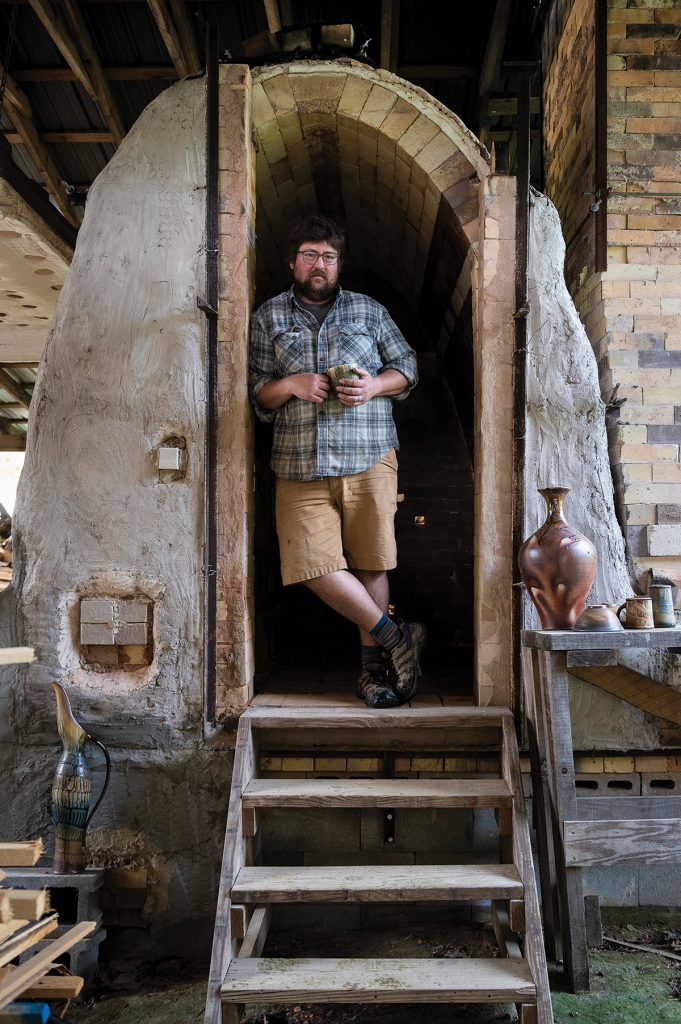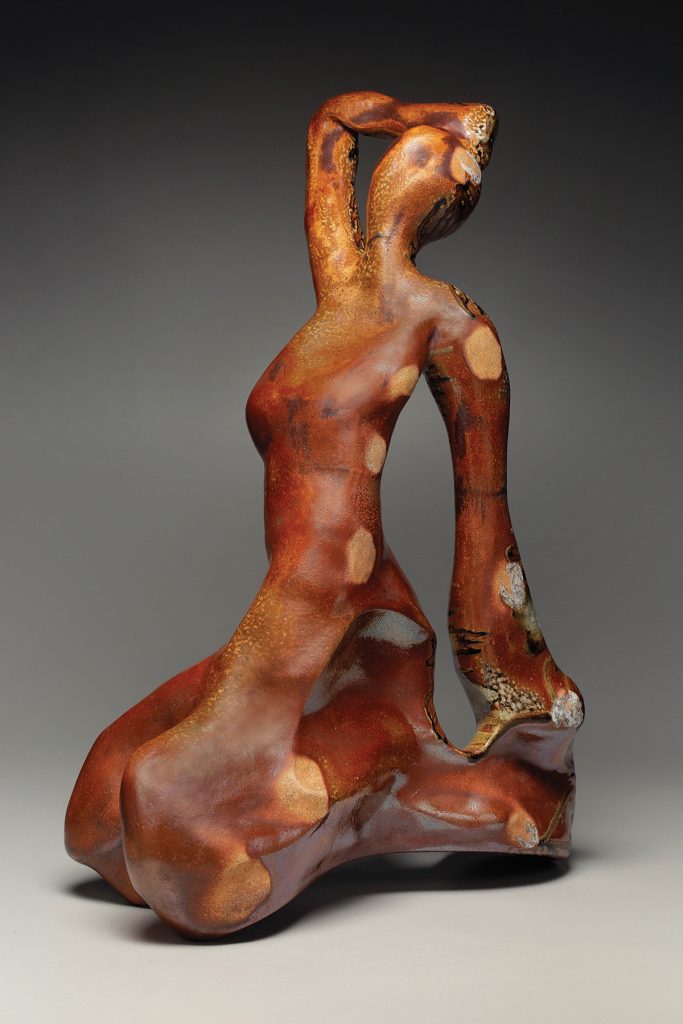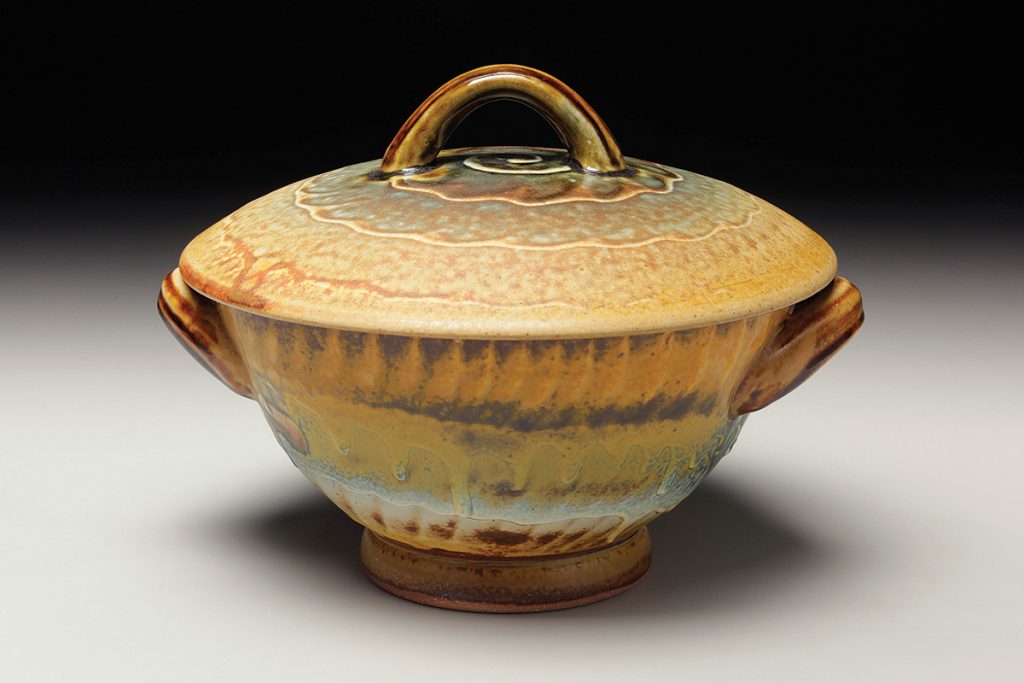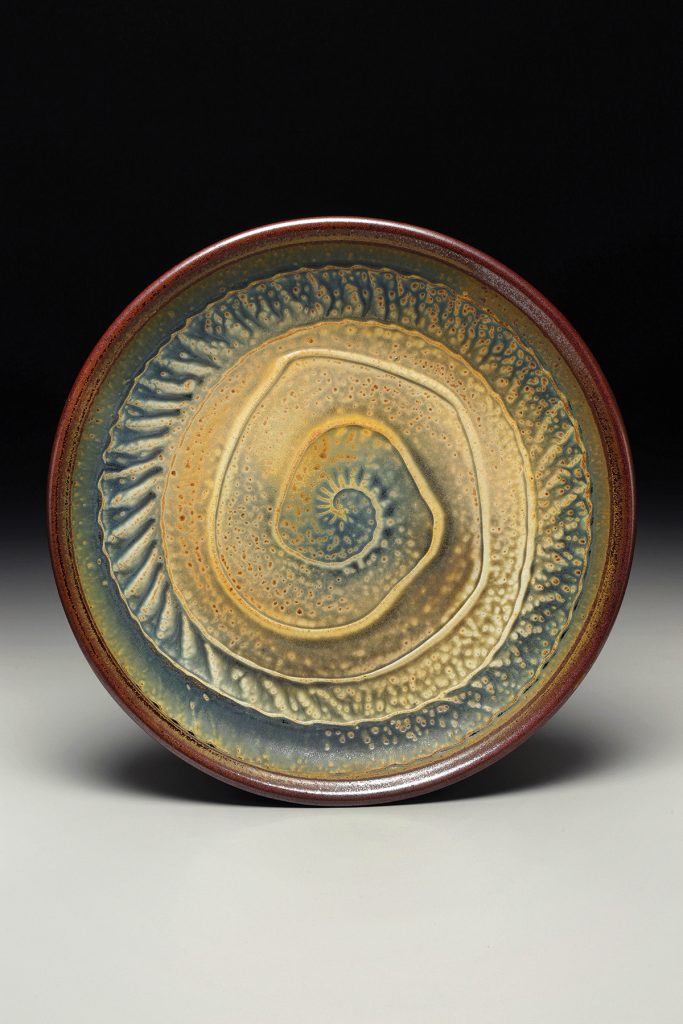
Portrait by Lauren Rutten
It took less than one semester at Virginia Tech for Joey Sheehan to trade graphic design for a studio-art major, and then swiftly fall in love with clay. A subsequent two-week, full-immersion workshop in wood-fired pottery at Arrowmont School of Arts and Crafts lit the fire for his lifework.
“There were 20 people making pots all day every day for a week, then we spent two days loading this 20-foot-long kiln — the biggest I had ever seen,” he recalls. “We worked in shifts to keep the fire going. It’s a constant process; you’re pouring your heart and sweat into this process. There’s so much camaraderie. By the time the piece comes out, you have an intimacy with each pot.”

Sheehan went on to earn his degree in fine arts and moved to Asheville in 2006 for a two-year residency at Odyssey Center for Ceramic Arts, which segued to a position as studio manager. He set up a space with potter Will Dickert in the River Arts District’s Phil Mechanic building, then moved to a larger space down the road in what is now The Mill on Riverside.

In 2012, Sheehan and his girlfriend (now wife) bought a house on five acres of land in Madison County, where he refurbished a couple of gas kilns before building a wood one. “If you wood fire [vessels], you build your own kiln,” he says. “Around here, there are a lot of people who wood fire. That community is so giving; I would call someone with a question and they’d just say, ‘Come on out, I’ll show you.’”

The kiln he built of fire brick and refractory mortar is two chambered, with 175 cubic feet of interior space. It’s nine feet wide with walls nine inches thick. There he recreates his formative experience with wood firing. “I have a group of friends and potters who come out to help,” Sheehan says. “Some bring their own pots; some just like the experience. We fire for about 50 hours. It’s all about stoking the fire and putting [in] the right amount of wood at the right time for whatever effect you’re looking for.”

Because the wood kiln involves so much labor and so many helping hands, he only fires it up about three times a year. To support his main line of work — functional tableware — he recently completed building a new gas kiln known as a car or cart kiln. “You load up the cart and roll it in. I can make enough work and fire it consistently on a normal schedule for wholesale orders and shows,” he explains.

Photo by Lauren Rutten
Sheehan’s wood kiln allows him more creativity and the freedom to do larger scale and more sculptural, decorative work, much of it influenced by his interest in classical forms of sculpture and pottery made in ancient Greece and Rome.
The initial impression of a piece from a wood-fired kiln can be underwhelming, he admits. “People see brown and wonder why we work so hard to get brown. But look closer and you see all the reactions of all the materials — browns, reds, blues, the iron, the copper — all coming out and reacting with the wood. It’s beautiful.”
Joey Sheehan, Melting Mountain Pottery, Marshall. Sheehan’s work is represented in Asheville by New Morning Gallery (7 Boston Way, Biltmore Village, newmorninggallerync.com). It’s also carried locally at Woolworth Walk (25 Haywood St., downtown Asheville, woolworthwalk.com); Seven Sisters Gallery (119 Broadway Ave., Black Mountain, sevensistersgallery.com); and Woodlands Gallery (317 North Main St., Hendersonville, woodlandsgallerync.com). Sheehan will teach a clay workshop at John C. Campbell Folk School July 25-30 (classes.folkschool.org). For more information, see meltingmountainpottery.com.